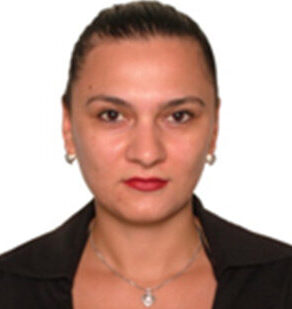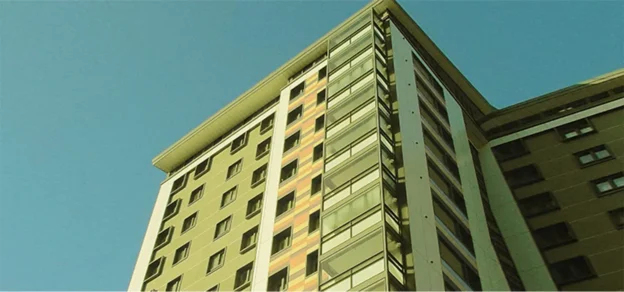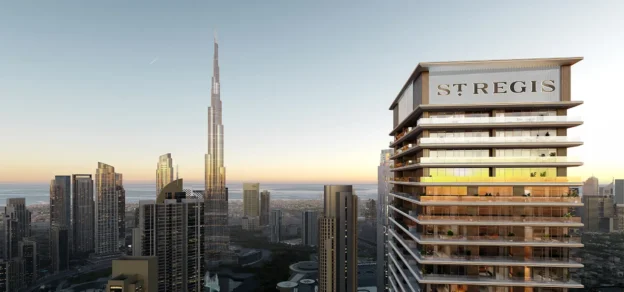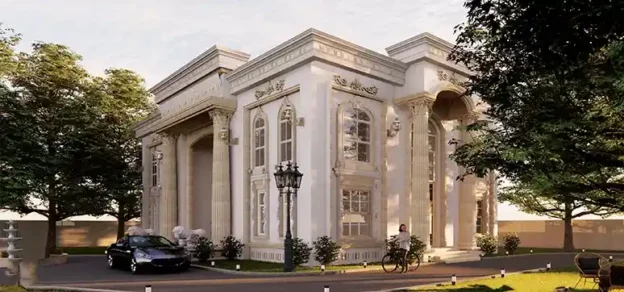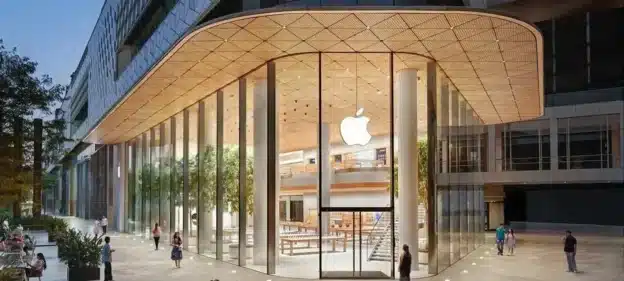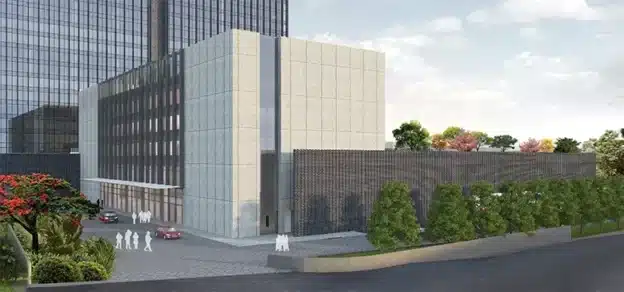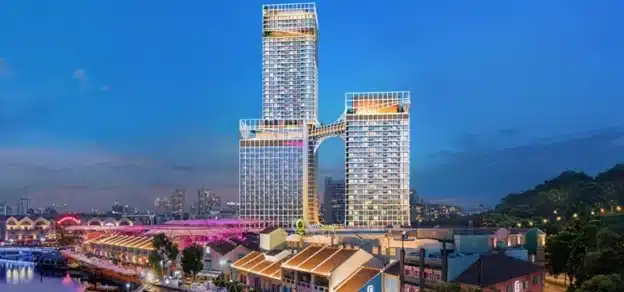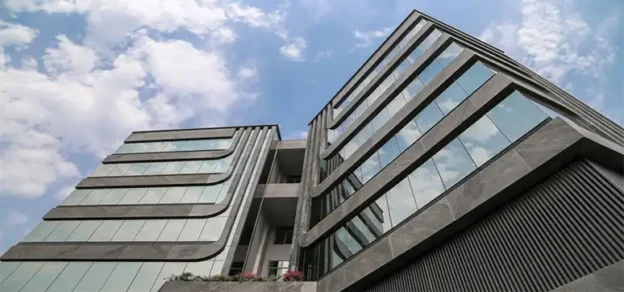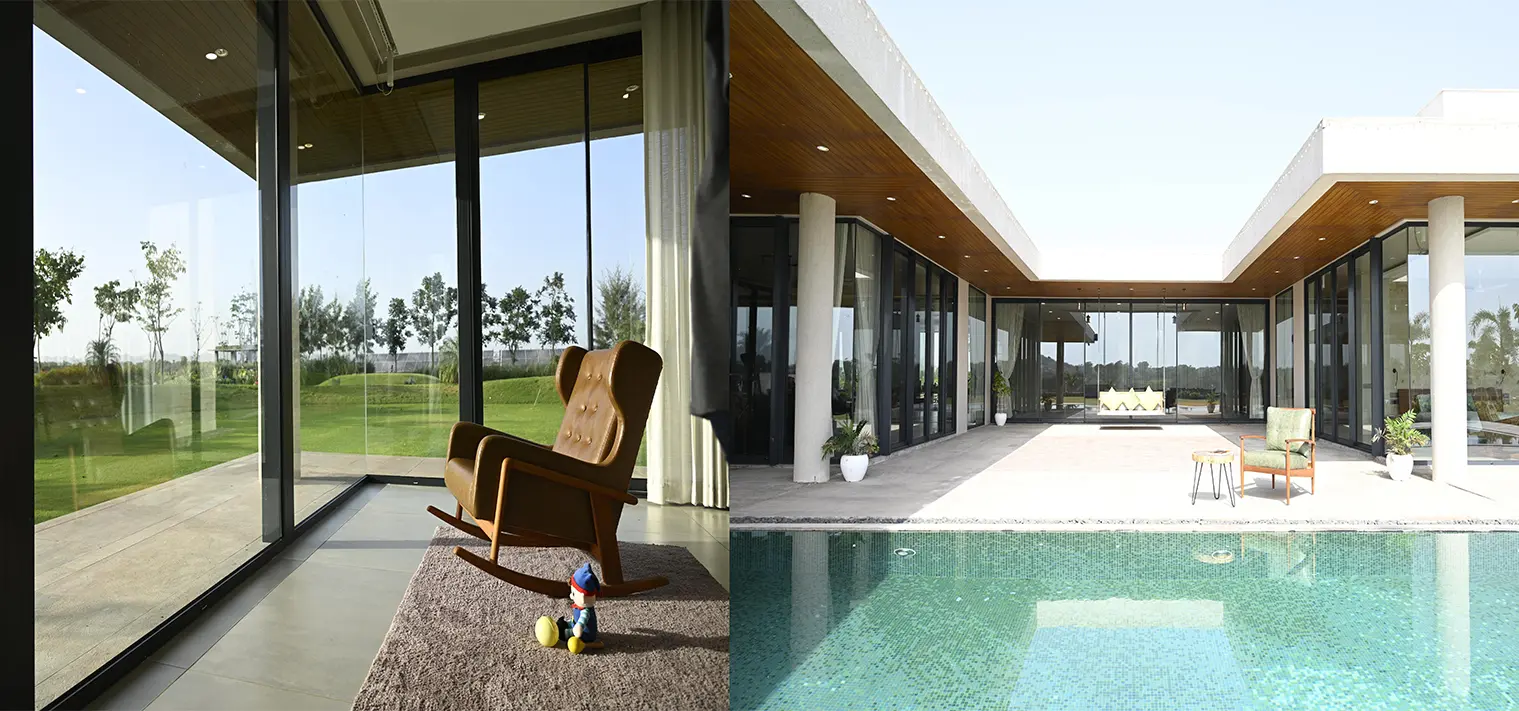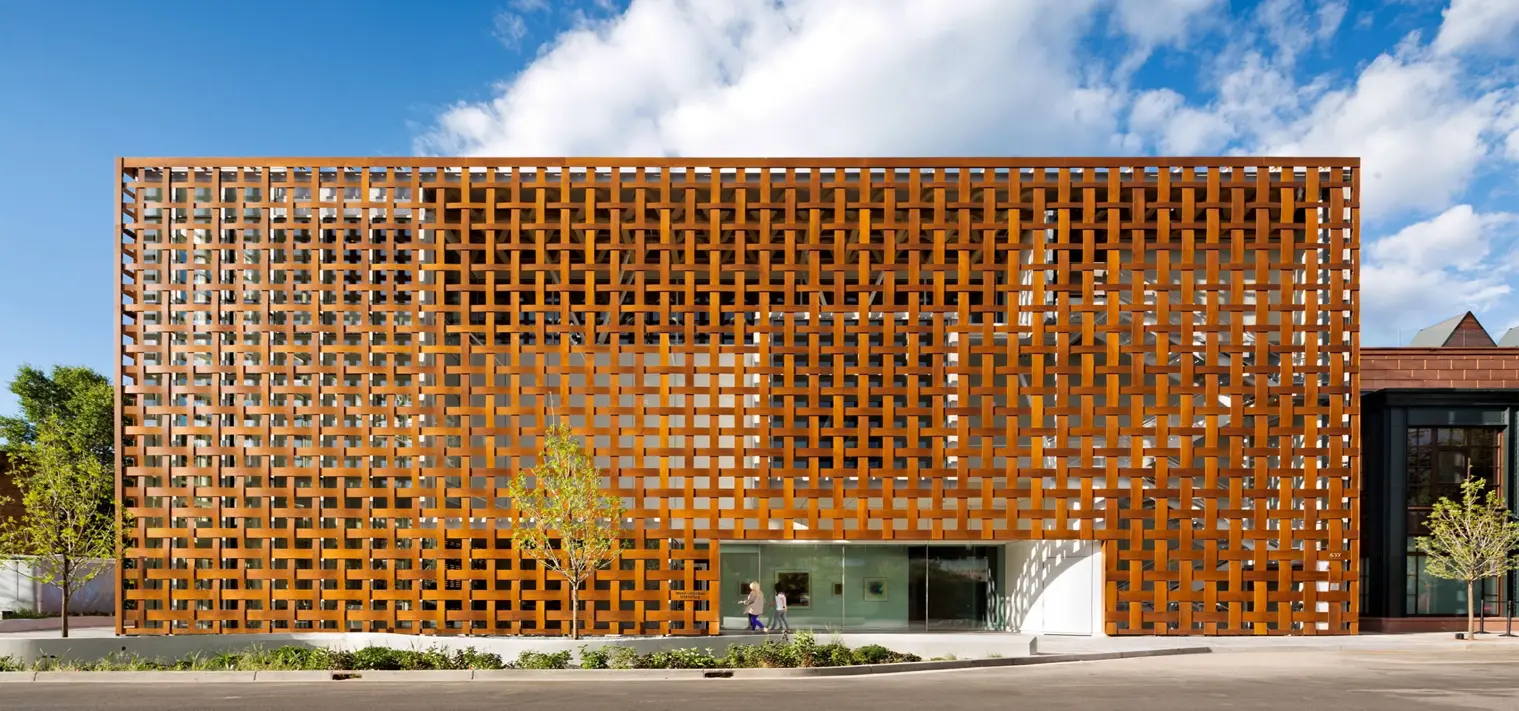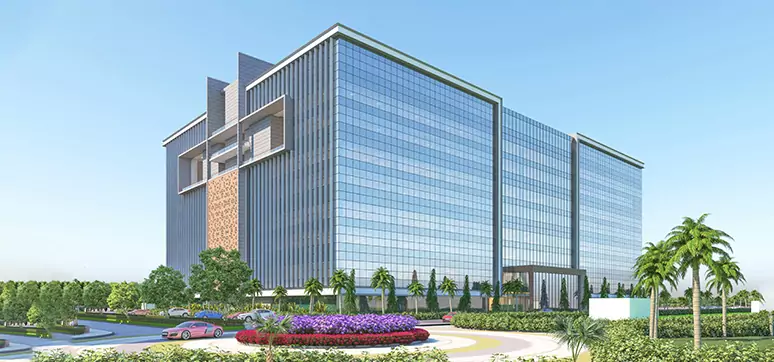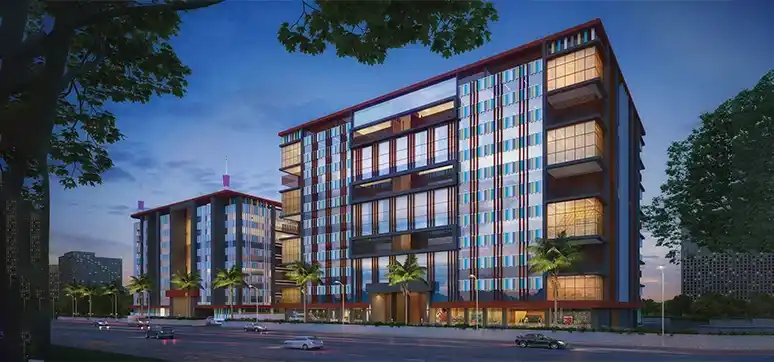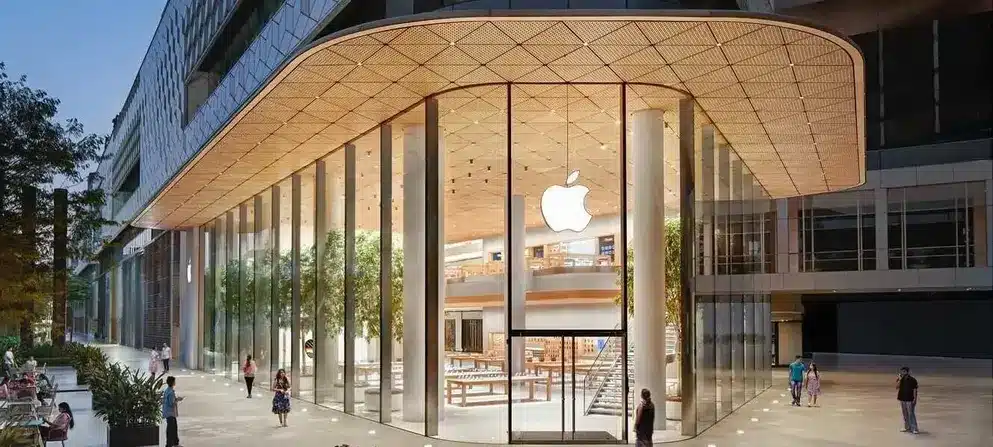Ethylene-Tetrafluoroethylene copolymer (ETFE) is one of the trending innovative cladding materials in the market which is known primarily through iconic projects such as Eden in Cornwall UK, Allianz Arena Stadium in Munich and National Aquatic Centre a.k.a. Watercube in Beijing. Being very thin, lightweight and when used in air-filled cushion systems its enormous strength and a range of adaptive environmental attributes render ETFE a very creative solution to many projects.
ETFE has been known since the 1940s, which was an accidental spin-off of man-made fluoropolymer during DuPont’s research program to develop an insulation material for industrial machinery that was resistant to friction and abrasion, immune to radiation and effective at both extremely high and low temperatures. Until 1970 it was not commercialized after which it was used in a wide range of applications in the petroleum, automotive, aerospace and nuclear industries.
The first architectural use of ETFE was done in Burgers Zoo in Arnheim, Holland in 1982 for rectification of roof cladding works.
ETFE is used as an extruded film to be used as a lightweight cladding material. It can be used on façade or roof applications where the detailing is similar. The thickness of the ETFE skin can be as thin as 100 microns ranging up to 250 microns which are designed by the ETFE specialist as per design requirements. The film can either be used in the form of an inflated multilayer pillow (named a Pneumatic system or Air-filled cushion system) or as a single skin when tensioned against a supporting curved structure in the manner of a tent. (fig. 1)
Salient Features of ETFE as a Facade Material
- ETFE is fairly resistant to tears and punctures and has good tensile stiffness. The relatively high tensile strength and modulus enable the polymer to maintain its form when stressed.
- ETFE membrane is immune to UV light, atmospheric pollution and other forms of environmental degradation. ETFE has shown no visible signs of deterioration in the Burgers Zoo application which was built 32 years ago. The expected lifetime of the material is anticipated greater than 40 years.
- Light penetration in ETFE can be as high as 95% however this would be in a diffused form and may pose a design concern where the clarity of the cladding is vital for the design.
- ETFE can be supplied in coloured or printed format to reduce solar glare/transmission. However, the colours are limited to blue, white and red.
- ETFE is a self-cleaning material and does not require frequent cleaning. As it is formed with the extrusion process ETFE has a very smooth and slippery surface.
- Since ETFE has an extremely smooth and non-adhesive surface it is difficult for algae to grow on the surface. If the detailing is done properly for the interfaces, dirt cannot accumulate.
Fire Performance of ETFE
The fire performance of the ETFE is studied on a design-case basis. Although ETFE is a combustible material, it is self-extinguishing and low inflammable due to the presence of fluorine in its chemical structure and a low oxygen index. ETFE can act as a self-venting during a fire. The material shrinks away when the temperature rises above 200ºC and creates a natural smoke vent. ETFE does not melt and drip when shrinking away as other plastic materials and produces toxic fumes only when burned at temperatures above 800 degrees Celsius.
Water Permeability
When designing ETFE roofs& canopies, water drainage is studied in particular in case of an air pump system failure or deflation of an ETFE pillow. In this respect, an appropriate fall or slope should be provided in the design to facilitate natural drainage minimize the risk of pooling water in case of failure and mitigate excessive stretching of material when filled with water. There are mechanical means of dealing with water drainage of the roof patented to each ETFE specialist. However, these are not recommended as these valve systems can cause air infiltration through the fixtures.
Maintaining an ETFE Facade
For regular maintenance, approximately every six months visual inspections should be conducted to detect any damages to the pillows and to check the air pump systems. Small holes that may appear in the cushions are normally acceptable as the inflation system works at quite low pressures and it would just have to work a little harder to compensate for the hole. The hole can be temporarily patched while are placement cushion is being maintained. ETFE suppliers have specialist methods for patching as ETFE can be difficult to bond to due to its smooth surface.
Punctures or tears less than 100mm long can be repaired on-site by using a specialist ETFE tape welded onto the foil. If a cushion needs to be replaced, access can be achieved using a net system the way ETFE cushions are installed.
TYPES OF ETFE APPLICATIONS:
-
Single Skin ETFE Applications:
- Single skin application is an integrated system with aluminium perimeter clamping and a water sealant system with stainless steel cables. ETFE when used as single skin requires stainless steel cables at the welded ETFE pockets at about every one-meter spacing to increase the strength of the material. The spacing of the cables depends on the design requirements and structural conditions.
- Single-skin ETFE membranes are used where the U-values are not a consideration. Single-layer ETFE enclosure systems cannot take advantage of pneumatic cushion technology with respect to the elongation of the material that initiates a load reduction cycle.
-
Pneumatic ETFE Applications:
- Pneumatic cushions may comprise 2 to 5 layers of ETFE which shall be determined as per design requirements. By using more layers the U-value of a cushion improves with an increased number of chambers in the cushion formed, this is particularly an important design aspect when built in cold climates.
- In pneumatic application, ETFE is supported via clamping with aluminium extrusion which is supported by the building frame. The cushions are inflated by an inflation unit to approx. 220 ~ 800 Pa internal pressure which gives the foil structural stability and additional insulation properties.
- By printing negative and positive patterns of the frit pattern on upper and intermediate layers various shading coefficients can be provided to the internal space. The pressure within the chamber in the pillows can be adjusted so the foils meet each other and an opaque surface can be created or when required air can be pumped to allow for light penetration through the two foils to the interior space. This provides a dynamic internal ambient in the building as per thermal comfort needs
- Pneumatic ETFE systems require an air pump unit and air distribution system. Systems usually consist of a centrifugal fan unit, humidity controls and filters that prevent moisture and dirt from entering the system. Dehumidifiers shall be considered to avoid any condensation issues particularly when used in climates with high humidity air conditions.
- ETFE cushions are constantly pressurized by pumps around the perimeter of the cushions which means they need a constant power supply that works at low pressures. Sensors shall be placed at particular locations to detect any air infiltration if happens and send the signal to the main control boards.
-

Infiltration systems operate constantly to account for any air loss in the system. One-way valves in the cushions are used to prevent them from deflating in case of air pump system failure. It is important that the pumps are maintained correctly and that no dirty air is allowed to be pumped into the cushions as this will result in the ETFE looking dirty and becoming impossible to clean.
- Air distribution system usually uses PVC pipes where they are not visible. Where they are visible architecturally more suitable pipes can be used.
- In pneumatic ETFE application, where the ETFE cushion is composed of framed ETFE membrane in tension by the air pressure pumped inside, it can act as the skin of a drum when rainwater hits the pillows.
-
Limitations:
- The drumming effect of rain on ETFE may become a design concern depending on the use and function of ETFE cladding applications. In this respect in projects such as hospitals, museums, and schools acoustic performance shall be studied if sound levels are a concern. In order to mitigate, preventive design methods can be adopted to reduce the impact of the noise generated by rain on the internal environment. One method to improve acoustic performance is to install an anti-drumming ETFE mesh over the ETFE skin. By doing that water can pool on the perforated mesh and dampen the noise from the rain. However, an anti-drumming mesh contradicts the benefits of the smooth surface of ETFE with respect to the self-cleaning aspect. Hence, unless it is not absolutely necessary it is recommended to have a provision on the rain noise mitigation while designing the ETFE and make the decision whether to install the anti-drumming mesh after the roof has been in operation for 3 or 4 years.
- Arup has been involved in many ETFE buildings in the world some of which are listed below.
- Two of the most recent projects with ETFE cladding in Singapore are used as case studies while discussing the ETFE properties and design considerations.
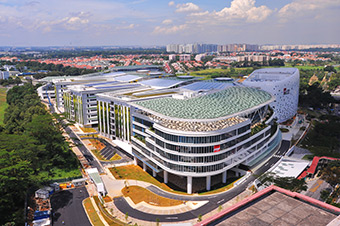
ITE College in Ang Mo Kio
ITE (Institute of Technology and Education) College in Ang Mo Kio was completed in 2012 and comprises a total of six ETFE canopies. Arup helped Architect (RSP Architects Singapore) during the design and execution of the canopies.
Four of the trapezoidal-shaped canopies at the fly roof area a.k.a. Pod Garden Canopies house green walls and gardens underneath. Two of the canopies with circular and elliptical roof forms cover an amphitheatre and a forum where public events take place.
For Pod Garden canopies it was crucial to use a material that allows Ultraviolet (UV) light penetration for allowing plant growth and photosynthesis for the green walls and gardens along the alley which is not possible with safety laminated glass. Architectural was looking for a transparent material allowing UV light transmission and adequate shading and thermal comfort to the pedestrians.
ETFE can penetrate 99% of the complete spectrum which includes visible, infrared and ultraviolet making it the best possible material to be considered for botanical gardens, and natural turf applications for stadiums or canopies above the gardens such as this project.
The architect wanted to create shadows with leaf patterns on the walls and floors to harmonize with the green walls surrounding the arrival gardens. This was possible through the frit pattern application to ETFE pillows with almost any pattern to provide some form of shading. In the ITE project, the leaf pattern was customized as per Architectural intent with 60% frit.
Substantial savings from the steel structure and aluminium framing were achieved due to the ultra-lightweight of the ETFE cladding. ETFE has a density of 1.75gr/m³ which equals 780g /m² for a single layer of ETFE skin. This is 3% of the weight compared to a 6+6 laminated glass panel. Reduction of the self-weight of the cladding material allowed the use of slimmer steel sections at the roof. Pod garden canopies spanning 35mtare formed with approximately 12 pillows with 4m width and in a single length.
Birds are unable to stand on the cushions due to their slippery surface. However, they can perch on the cover caps between ETFE cushions and peck holes in the ETFE cushions which is one of the issues that may damage the ETFE cushions. To prevent the possible bird pecking and damaging bird wires are installed on the top of the aluminum extrusions. Having springs on both ends of the stainless steel wires birds are unable to keep their balance when landing on the wires and this helps to avoid damage risks.
At forum and amphitheatre canopies with curvilinear forms reaching to 30 m span 70% print is selected to provide thermal comfort to the occupants. As the canopies house public events, the acoustical performance of the material was important. ETFE is transparent to sound; meaning that sound travels through and very little noise is reverberated back. In the case of noise generated within the area below the canopy, this is beneficial as the ambient noise will go straight through the roof and will be therefore less difficult to control. This was beneficial in the case of the forum and amphitheatre canopies. But this also means that noise generated outside the covered area i.e. plant and equipment noise will be heard within the space which may become a design concern for other applications and a particular acoustics study shall be done in such cases.
ITE was a very fast-track project where ETFE helped with reducing the installation duration to one-third of the time that would be required for glass canopy installation. Being able to pass large spans and installation methodology installation time of ETFE is much shorter than any other cladding material. ETFE can be produced as long as required from a handling perspective 50m length is a recommended span; in this project, the maximum length utilized was about 35 mt long.
With the innovative use of ETFE, many advantages are gained throughout the project with savings on costs, shorter installation duration and meeting the project performance requirements such as UV penetration, shading with customized patterns, acoustical transparency and large spans with minimal framing.
Sports Hub a.k.a. National Stadium
Reaching its final days of completion, Sports Hub is one of the biggest and most innovative iconic projects of Singapore with an ultra-thin moving roof spanning 310m over the stadium housing 55,000 people at public and sports events.
The roof is mainly made of 2 layers; ETFE moving roof supported on runway trusses and operating above an aluminium standing seam fixed roof. Running over the runway trusses, the moving roof can be closed and opened in about 25 minutes.
20,000m2 moving roof is cladded in a multi-layer ETFE pillow and incorporates a matrix of LED lights, making it one of the largest addressable LED screens in the world.
By using an ultra-lightweight cladding material on the moving roof, the result is a super-efficient shell dome structure, with a total steel weight of 8,057 metric tons. At a structural weight per square meter of just over 100kg/m2, this would be considered efficient even for a roof that was half this span.
ETFE pillows with 3m width by 50m length for an individual pillow covering the enormous roof with minimal use of aluminium extrusion and steel subframe. LED lights are incorporated within the ETFE design and when lit at night any shapes can be created on the giant screen as well as the national flag of Singapore.
Natural turf is used in the design with UV light penetration when the roof is in closed conditions, other times a roof can be opened to allow for direct sunlight penetration into the space.
Solar shading to the roof is provided by applying a frit pattern on the upper ETFE skin and diffused light is provided to avoid increased solar heat gain and glare issues to ensure spectator comfort levels. The high insulation properties of ETFE pillows provide shelter from the high solar heat gain while keeping the cooled air within the dome.
Sports Hub was awarded Green Mark Gold Plus status with the incorporation of innovative green technologies and will be one of the signature projects of Singapore.

